Posted by June Underwood on April 18th, 2009
As Steve noted not long ago, perception — how, as well as what, we see and record — is prime territory for this group. Some weeks ago I wrote about painting in the desert, the Great Basin to be more precise, and, even more specifically, the Amargosa Plain just outside of Death Valley.
After having spent 6 weeks in the desert, perceiving and painting, mostly plein air, I am now back in Portland reading about desert perception in William L. Fox’s The Void, the Grid, and the Sign.
Fox has spent most of his life in and around a variety of deserts and back-of-nowhere lands, but in The Void he’s primarily concerned with the Great Basin, that large space between the Rockies and the Sierras, where water flows in, but never out, where there is no river coursing to the sea. He says that outside of Afghanistan, this area contains the most mountain ranges (316) in the world, but there are also 90 basins, places where what little water exists is captured between ranges and sinks or evaporates. The best known of these basins is perhaps Death Valley, although that lies outside Fox’s attention. The place I was painting, the Amargosa Plain, is also just outside his wide-ranging travels. However, much of what he says is apropos of the Amargosa and Death Valley.

Death Valley at the Beatty Cut-off, March, 2009
more… »
Posted by Steve Durbin on April 3rd, 2009
Kazimir Malevich painted his Black Square in 1915, and it was soon followed by White on White. I had thought this was pretty radical, but I’ve just been reading of three earlier works along similar lines, created by Alphonse Allais in the 1880’s. Alas, no images seem to be available on the web, but I’ve approximately re-created them from descriptions in Kirk Varnedoe’s Mellon Lectures.
more… »
Posted by June Underwood on March 21st, 2009
And now, at this point (day 30) in this particular residency in Beatty, Nevada, I am pondering a conundrum about my own landscape work. I haven’t quite enough distance to say for certain [pun recognized after it was made] but it seems to me that my interest in context and a sense of place interferes with my achieving a stylistic breakthrough, particularly with the set pieces that I love, like the mountains around Beatty.
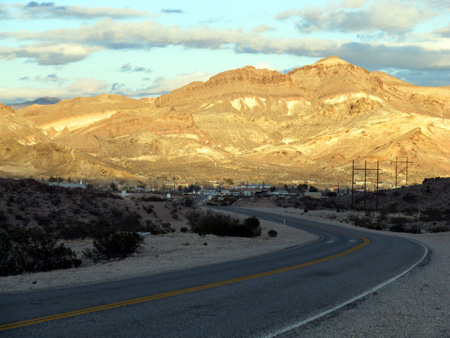
As my colleague and friend David T would say: if he walked into a gallery with my landscape paintings, he wouldn’t think of them as being “by June Underwood,”just as “nice” (not a compliment) landscape paintings.

more… »
Posted by June Underwood on March 6th, 2009
One of my preoccupations in painting inhabited space is to see how people perceive and decorate their surrounds. In cities, it seems to me, conformity sometimes rules — or perhaps there’s too much unconformity to make sense of a singular type of decorative decorum. Whatever the case, I find that peering at small towns and villages gives me a certain kind of data; both individually and collectively, people seem to want to dress up, decorate, make order of what lies around them. And in places with few people, it’s possible to suss out what that decorative impulse consists of.
A particular caution that I remind myself of — looking at what people do to dress up their trailer houses requires a disciplined mind. My goal is to neither romanticize nor to satirize. I allow myself no irony about individual choices, although lots of irony can abound when examining communal structures (like bridges and mine tailings). What I want is to see what’s there without indulging in judgment.
So what is the predominate beautification element of Beatty Nevada ( 220 miles south of Reno, 110 miles north of Las Vegas, population 1200, where the Amargosa River surfaces, just for a minute, before being swallowed by the Amargosa desert [a subset of the Mojave desert])?
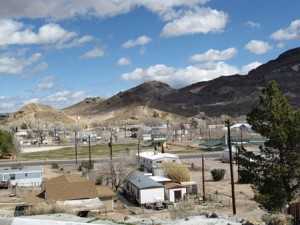
more… »
Posted by Steve Durbin on March 2nd, 2009
I guess it’s natural for a photographer working in black and white to notice where things fall on the continuum between the two. Though all shades of gray are lovable, it’s more the extremes that seem to win my heart. It’s the attraction of pure yin and yang. It’s therefore a special delight when winter brings a reversal of this duality in one of my favorite subjects, namely streams and their ilk. Once there’s snow on the ground and ice forming on the bank, the water itself turns dark, just the opposite of the typical summer pattern of white water amid dark rocks or ground. Since a trip a couple months back along a local stream after the first big snowfall, I’ve been contemplating a series I tentatively called Black water. The early images didn’t seem especially promising, but I never found time to take a good crack at it.
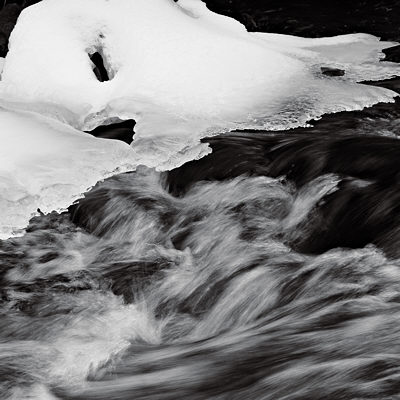 1
1
more… »
Posted by June Underwood on February 9th, 2009
“Pattern and Decoration” (P&D) is the name of an art movement that had its moment of visibility in the post-modern pluralism of the 1970’s and 1980’s. Its practitioners include Valerie Jaudon, Miriam Schapiro, Joyce Kozloff, Kim MacConnel, Tony Robbin, Robert Kushner, Robert Zakanitch, and many others. P&D often serves as an unheralded theoretical base for the quilted arts that I am familiar with.
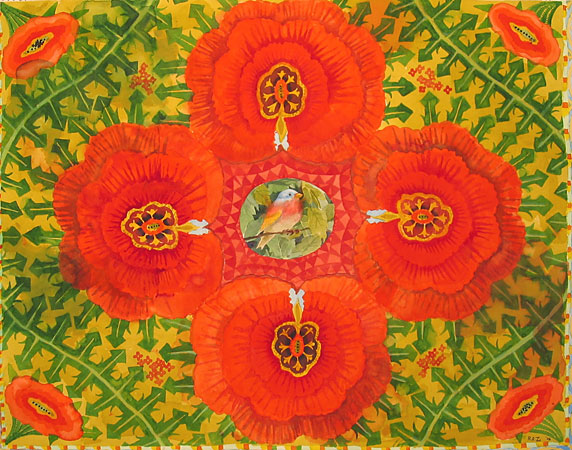
Robert Zakanitch, Red Watercolor, 34 x 36, 2007
Pattern and Decoration: An Ideal Vision in American Art, 1975 –1985 is the printed catalogue of an exhibit held at the Hudson River Museum in 2007 -2008. The catalogue has excellent essays by Anne Swartz, Arthur Danto, Temma Balducci, and John Perreault, as well as including short biographies of the artists and plates of the exhibited art. Most of the words which follow come from the catalogue.
more… »
Posted by June Underwood on January 12th, 2009
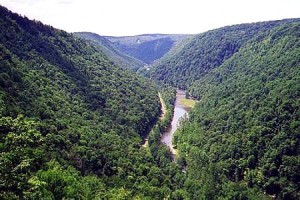
Pine Creek Gorge, photo from Wikipedia Commons, Commons licensing
I have been violating one of my basic principles. I have, gasp, been painting from photographs.
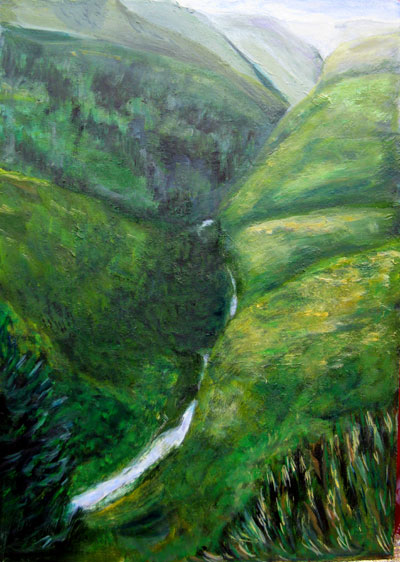
Pine Creek Gorge 2, 12 x 16″ Oil on board, 2008
more… »




 1
1

